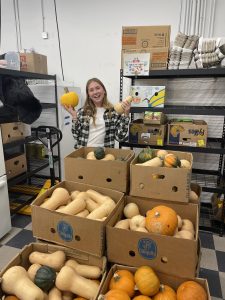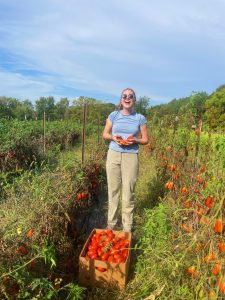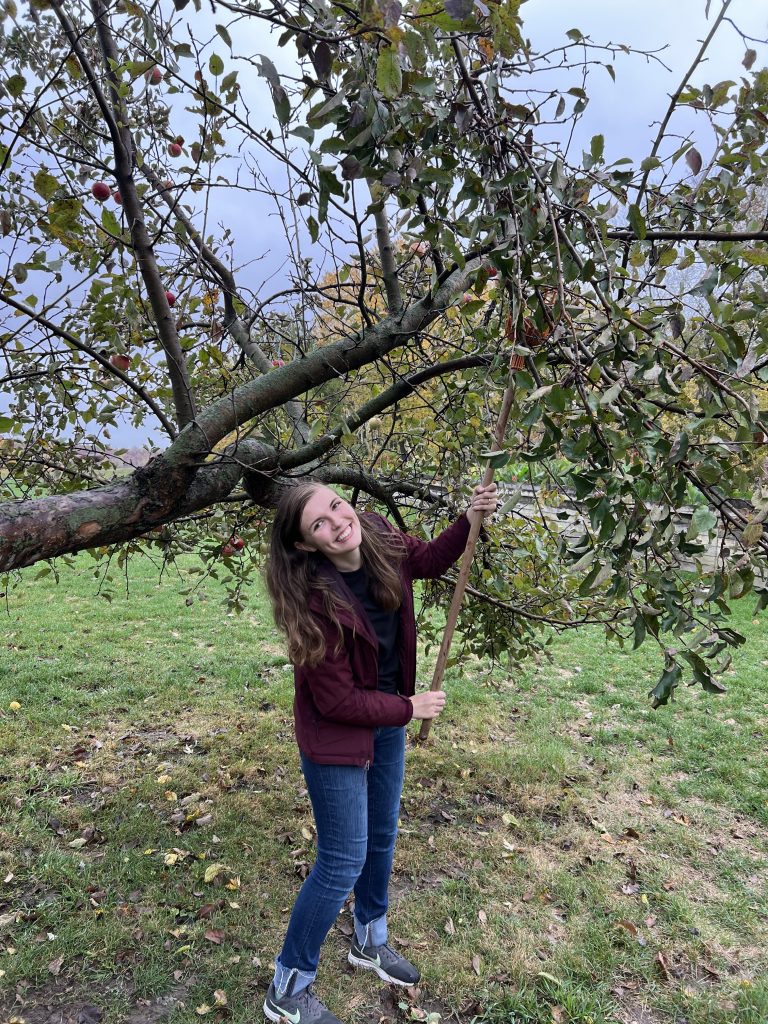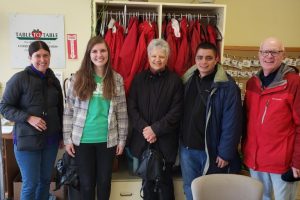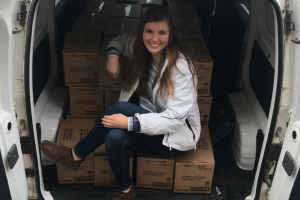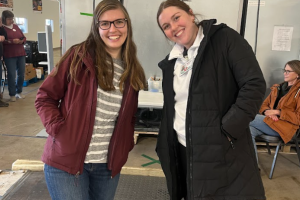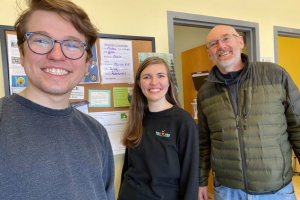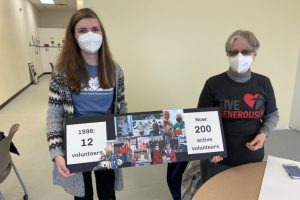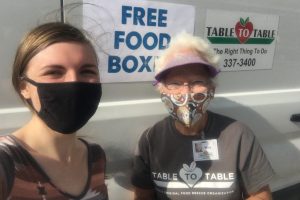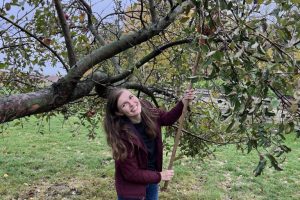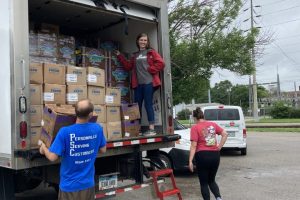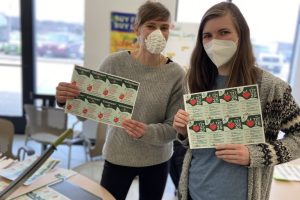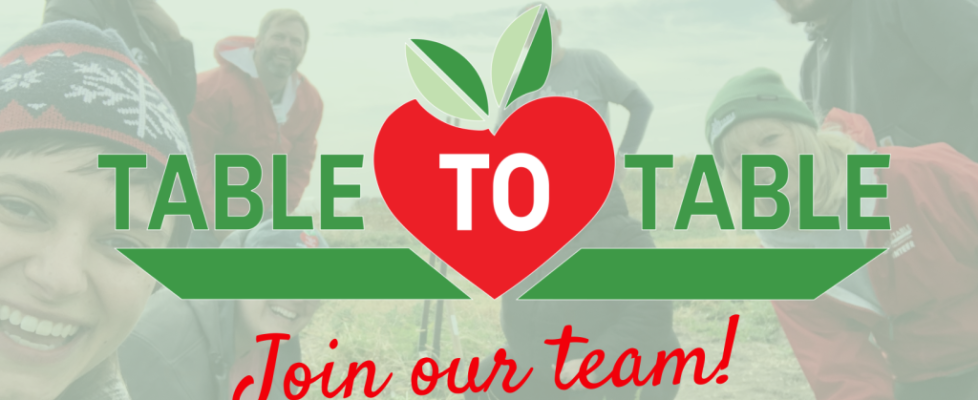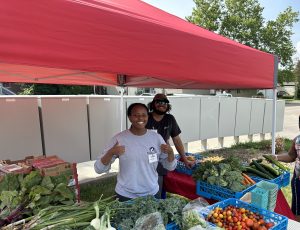Join our team! Green Iowa AmeriCorps Positions at Table to Table
Position Summary:
Green Iowa AmeriCorps Members contribute to the hunger relief efforts in Johnson County by supporting the daily function of our food rescue program and expanding those efforts. The Food Rescue Specialist is part of the team welcoming & directing volunteers, actualizing smooth pick-up and delivery of food donations, preparing T2T’s fleet of vehicles for food rescue routes, coordinating volunteers & leading them to glean (harvest) excess produce from local farms and gardens, as well as getting the food to food-insecure individuals via Free Produce Stands.
T2T serves as the hub for 60% of the food distributed by Johnson County’s hunger relief network. The best candidate is an energetic team player with strong communication skills who enjoys interacting with people of diverse ages and backgrounds.
AmeriCorps Service Term Options:
Summer “Minimum-time” Position: June 3rd – August 16th, 2024
11-month Service Position: September 16th, 2024 – August 15th, 2025
Work Hours:
At least two days Monday-Friday from 8am until noon or 3:30pm with some flexibility.
Up to two evenings a week 3-7:30pm for Free Produce Stands. Other days and times as needed and agreed upon. May include weekend Free Produce Stands, gleaning & volunteer events, farmer’s markets, or outreach events with partner organizations.
About AmeriCorps:
AmeriCorps is the federal agency for national service and volunteerism in the United States. It’s an opportunity for adults of all ages and backgrounds to serve their communities and their country through a network of partnerships with local and national nonprofit groups. AmeriCorps members address critical needs such as literacy, health, housing, technology, the environment, economic development, and many other fields. It is a chance to apply your skills and energy toward helping others and strengthening the organizations that make a positive difference in Americans’ lives. Learn more here >
Financial Information, Benefits, & Additional Information: Available through Green Iowa >
Supervision Given By: The Food Rescue Programs & Services Manager
Qualifications & Competencies:
- Enthusiastic advocate for food rescue, hunger relief, and food waste reduction.
- Ability to work in a fast-paced environment, maintaining energy through often repetitive tasks. Ability to switch gears quickly and manage multiple tasks concurrently.
- Ability to work autonomously and perform well under pressure. Detail-oriented & resourceful.
- Functional knowledge and ability to use Microsoft Office and Google Suite.
Licenses & Qualifications:
- Required: Must be able to regularly and repeatedly lift and move 20-40 lbs.
- Preferred but not required: Over 21 with a valid driver’s license for a minimum of 4 years and good driving record (must be insurable under organization liability insurance); willing to drive large vehicles.
- Must be able to use technology including computers, printers, phones, vehicle and refrigeration units, and other equipment. Functional knowledge of computer systems.
Essential Functions:
Lead Gleaning and Farm Produce Collection Efforts
- Harvest excess produce from farms and gardens
- Collect excess produce from markets and produce auctions
- Recruit and communicate with farmer- and gardener-donors to increase local food donations
- Recruit and schedule volunteers, including communication of location and time for activities
- Lead volunteers in gleaning activities
- Demonstrate best practices for food handling safety
- Motivate and build up the local farmer- and gardener-donor network through recognition events and outreach
- Connect with other gleaners in Iowa and build or rebuild gleaning communications and networks
- Track data and evaluate trends around gleaning efforts
Food Distribution through Free Produce Stands
- Deliver harvested and prepared produce to local partners in the Johnson County hunger relief network including food pantries & overnight shelters
- Facilitate produce pop-up stands (Free Produce Stands) in neighborhoods & community locations to deliver free produce to food insecure individuals
- Lead volunteers in setup and tear down of produce stands
Volunteer & Program Operations Duties
- Recruit and schedule volunteers as needed for gleaning, Free Produce Stands, and food rescue operations
- Utilize communications tools and create materials to increase public awareness of programs, services & opportunities
- Participate in food rescue program by picking up donations from local partners and delivering/unloading donations at distribution sites
- Record volunteer feedback and pass on pertinent information that impacts planning and management of food rescue program
- Answer phone calls, greet volunteers & visitors, and accept walk-in donations
- Unload and organize food received and work with staff to determine the appropriate distribution of food donations
- Organize and maintain food inventory: freezer, cold, and dry food storage spaces
- Complete Fleet & Facility Prep duties as needed when volunteer positions are unfilled
- Track data and evaluate trends: Perform food rescue program data entry & assist with volunteer record keeping through Salesforce
Typical challenges this position will face:
- Frequent interruptions, especially during hours with heaviest volunteer activity
- Last-minute volunteer & logistics scheduling conflicts
- Needing to make sound, quick decisions based upon available information
Work Environment:
- Work is in-person in both an office and warehouse/transportation environment
Interested in learning more?
Information & application here >
Table to Table’s Mission Statement:
Table to Table bridges the gap between abundance and hunger. Our mission is to increase food equity and reduce environmental harm by collecting and redistributing surplus food through partners to people who can use it.
Full PDF version of position description
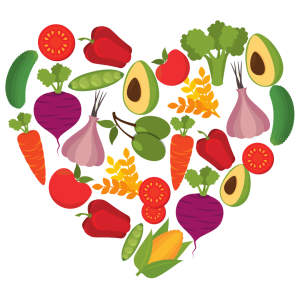
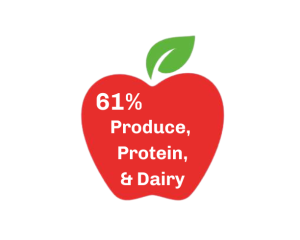

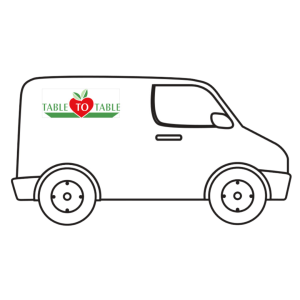
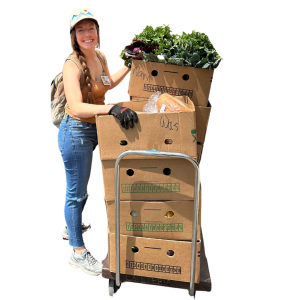


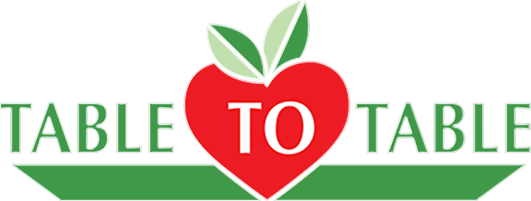
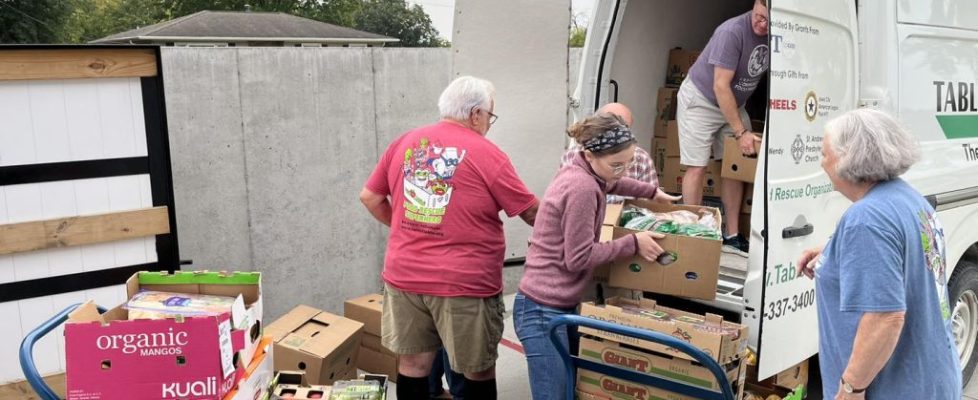
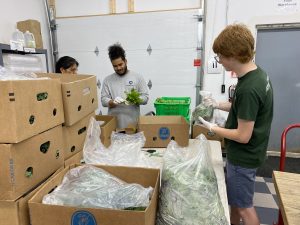

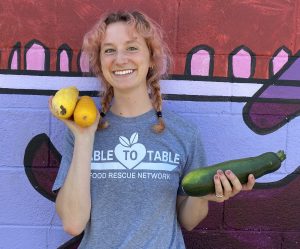
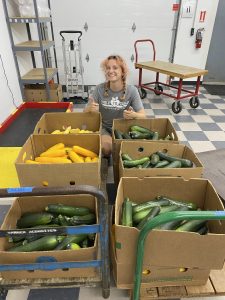
 Adam McFee joined our ranks in January of 2024 as a weekly route volunteer before becoming a Summer term Green Iowa AmeriCorps member in June to serve as our Gleaning Coordinator. What excited him the most about this change was his personal interest in food rescue and sustainable practices, and the chance to have such a direct positive impact on his community. Building off the foundational work for our gleaning network set in place by a previous AmeriCorps member, Marquis Heard, Adam was able to increase the amount of food rescued through gleans by 106% compared to 2023, for a total of 2,046 lbs. of produce. He worked with five new growers in addition to existing partners and completed 27 gleans during the course of his term.
Adam McFee joined our ranks in January of 2024 as a weekly route volunteer before becoming a Summer term Green Iowa AmeriCorps member in June to serve as our Gleaning Coordinator. What excited him the most about this change was his personal interest in food rescue and sustainable practices, and the chance to have such a direct positive impact on his community. Building off the foundational work for our gleaning network set in place by a previous AmeriCorps member, Marquis Heard, Adam was able to increase the amount of food rescued through gleans by 106% compared to 2023, for a total of 2,046 lbs. of produce. He worked with five new growers in addition to existing partners and completed 27 gleans during the course of his term. 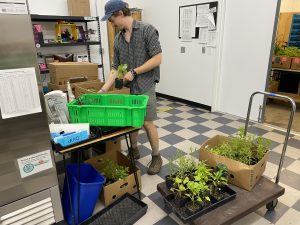 This was my first job where I felt I had real agency over my time and how I would do the job. I was able to really build up the program in the way I felt was most effective and have a real hands-on role in its development. Fitting around program coverage, I thought of Mondays, Tuesdays, and Wednesday mornings as my slots for gleans, and aimed for two or three gleans a week. I created a thoughtful and deliberate process through which I approached my daily responsibilities for setting up and executing gleans, in addition to serving as a core support team member for regular operations as well. The dynamic nature of my role and the independence it allowed me really helped me grow professionally and personally in ways I will carry with me throughout all my future endeavors.
This was my first job where I felt I had real agency over my time and how I would do the job. I was able to really build up the program in the way I felt was most effective and have a real hands-on role in its development. Fitting around program coverage, I thought of Mondays, Tuesdays, and Wednesday mornings as my slots for gleans, and aimed for two or three gleans a week. I created a thoughtful and deliberate process through which I approached my daily responsibilities for setting up and executing gleans, in addition to serving as a core support team member for regular operations as well. The dynamic nature of my role and the independence it allowed me really helped me grow professionally and personally in ways I will carry with me throughout all my future endeavors. 